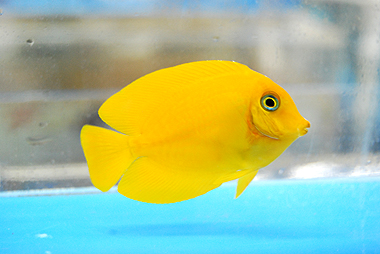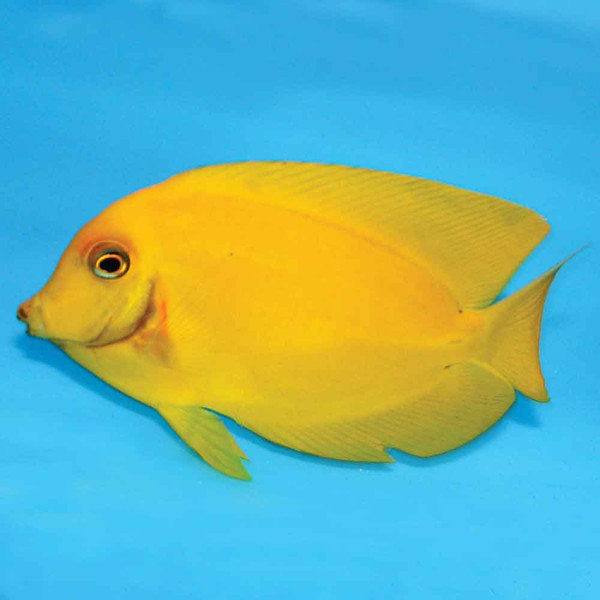Mimic Yellow Tang
If you're looking for a unique and colorful addition to your aquarium, look no further than the Mimic Yellow Tang.
Many aquarium owners struggle with finding the right balance of fish and marine life in their tanks. It's important to ensure that your aquatic pets not only coexist peacefully, but also thrive in their environment. Mimic Yellow Tangs can be a great choice for those looking for a hardy and adaptable fish, but they do come with their own set of challenges.
The Mimic Yellow Tang, or Acanthurus pyroferus, is a type of surgeonfish found in the Indo-Pacific region. They are known for their bright yellow coloration, which fades into a greyish-brown at the edges of their scales. Mimic Yellow Tangs are active swimmers and grazers, and can grow up to 8 inches in length.
In this article, we will explore the world of the Mimic Yellow Tang and provide a comprehensive guide to keeping them happy and healthy in your aquarium.
The Target of Mimic Yellow Tang
I first discovered the Mimic Yellow Tang while browsing in my local fish store. I was struck by their bright coloration and active swimming style, and knew right away that I wanted to add one to my tank.
While researching the Mimic Yellow Tang, I learned that these fish are native to the coral reefs of the Indo-Pacific region. They typically live in small groups and feed on algae and small invertebrates. In the aquarium, it's important to replicate this environment and provide plenty of hiding places and grazing opportunities for your Mimic Yellow Tang.
One challenge of owning a Mimic Yellow Tang is their territorial behavior. They can be aggressive towards other fish in the same family, such as other Tangs or Surgeonfish. It's important to provide plenty of space and hiding places in your tank to minimize any bullying behavior.
Mimic Yellow Tang Personal Experience
When I brought my Mimic Yellow Tang home from the aquarium store, I was excited to see how he would adapt to his new environment. At first, he was a little shy and spent most of his time hiding in the corner of the tank.
Over time, however, he became more confident and began exploring his surroundings. I noticed that he was particularly fond of the live rock in the tank, and would often spend hours grazing and picking at the algae growing on it.
I also learned that my Mimic Yellow Tang had a bit of a personality. He would often follow me as I moved around the tank, and would even beg for food when he saw me approaching with the fish flakes.
Overall, I've been very happy with my choice to add a Mimic Yellow Tang to my aquarium. He adds a pop of color and personality to the tank, and is a joy to watch as he explores and grazes.
Mimic Yellow Tang and Diet
Mimic Yellow Tangs are herbivores and require a diet that is high in algae and other plant-based foods. In the wild, they feed on a variety of algae types, as well as small invertebrates.
In the aquarium, it's important to provide a varied diet for your Mimic Yellow Tang. You can offer them a mix of dried seaweed, frozen mysis shrimp, and other plant-based fish foods. It's also a good idea to occasionally offer live food, such as brine shrimp or copepods, to ensure that your Mimic Yellow Tang is getting all the necessary nutrients.
Mimic Yellow Tang and Disease Prevention
Like all fish, Mimic Yellow Tangs are susceptible to a variety of diseases and parasites. It's important to keep a close eye on your fish for any signs of illness, such as lethargy, loss of appetite, or unusual spots or growths on their scales.
To prevent disease, it's important to maintain good water quality in your tank. This means doing regular water changes, monitoring the pH and salinity levels, and ensuring that your tank is not overcrowded.
Mimic Yellow Tang Q&A
Q: Can I keep more than one Mimic Yellow Tang in my tank?
A: Mimic Yellow Tangs can be territorial and may fight with other fish in their family, so it's best to keep only one in your tank unless you have a very large aquarium with plenty of hiding places.
Q: What's the best way to feed my Mimic Yellow Tang?
A: Mimic Yellow Tangs are herbivores and require a diet that is high in algae and other plant-based foods. You can offer them a mix of dried seaweed, frozen mysis shrimp, and other plant-based fish foods.
Q: How big do Mimic Yellow Tangs get?
A: Mimic Yellow Tangs can grow up to 8 inches in length
Q: What kind of environment do Mimic Yellow Tangs need?
A: Mimic Yellow Tangs are typically found on coral reefs in the Indo-Pacific and require a similar environment in the aquarium. This means providing plenty of hiding places and grazing opportunities, as well as maintaining good water quality.
Conclusion of Mimic Yellow Tang
If you're looking for a colorful and active fish to add to your aquarium, the Mimic Yellow Tang may be just what you're looking for. With their bright yellow coloration and active swimming style, these fish are sure to add a pop of personality to any tank.
However, it's important to keep in mind that Mimic Yellow Tangs can be territorial and may require some extra care to keep them happy and healthy. By providing a suitable environment and a varied diet, you can help ensure that your Mimic Yellow Tang thrives in your aquarium.
Gallery
Yellow Mimic (Chocolate) Tang
Photo Credit by: bing.com / mimic juvenile
Mimic Yellow Peel Tang

Photo Credit by: bing.com / mimic pyroferus acanthurus tangs reefs w2r reef
Mimic Yellow Tang — AquariumFishSale.com

Photo Credit by: bing.com /
TOP 50 Yellow Mimic Tang - Acanthurus Pyroferus

Photo Credit by: bing.com / mimic tang yellow acanthurus choice weekly
Yellow Mimic Tang - Acanthurus Pyroferus - Medium | Thatpetplace.com

Photo Credit by: bing.com / tang mimic yellow acanthurus thatpetplace pinit medium